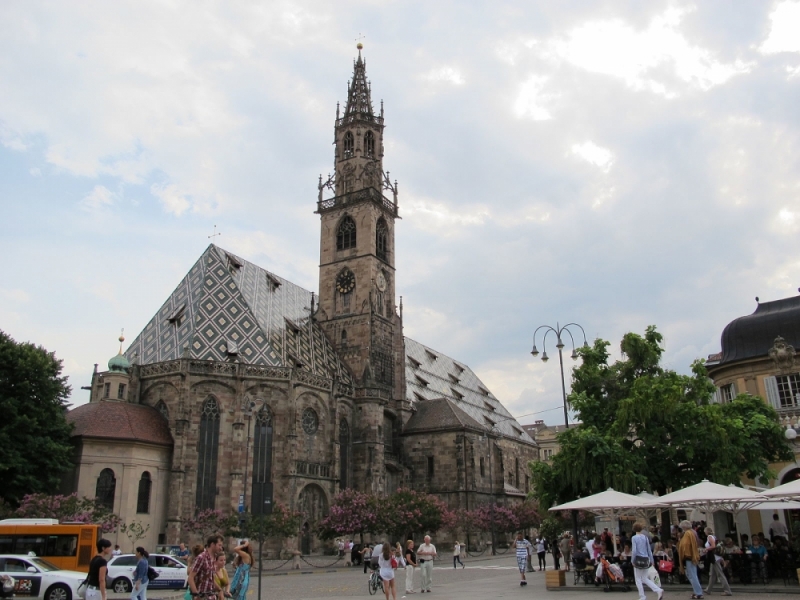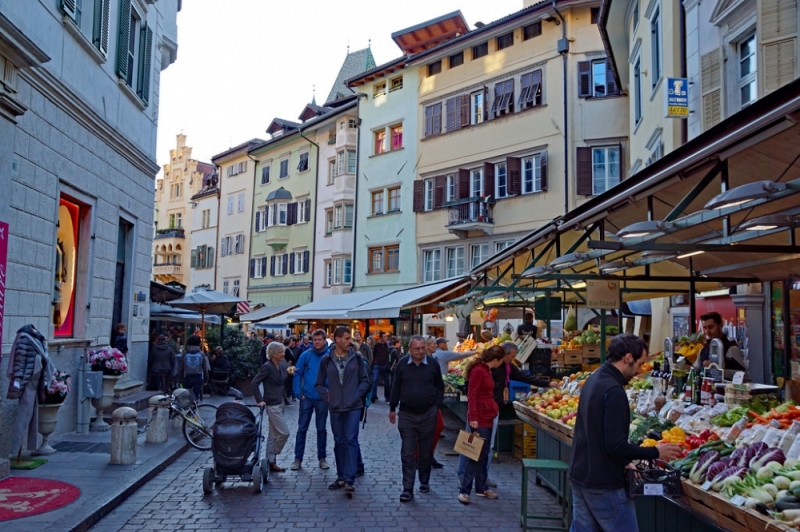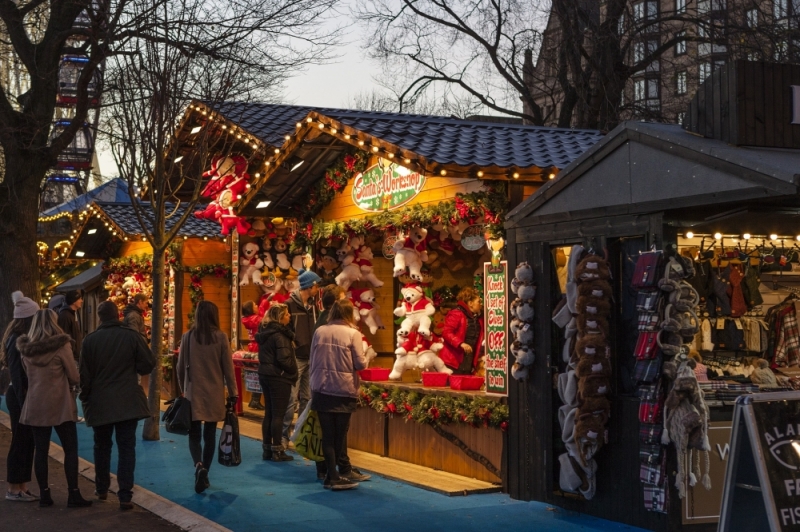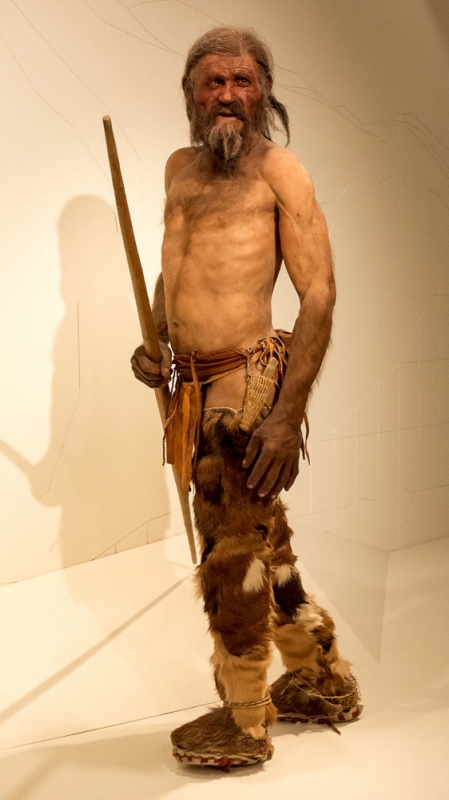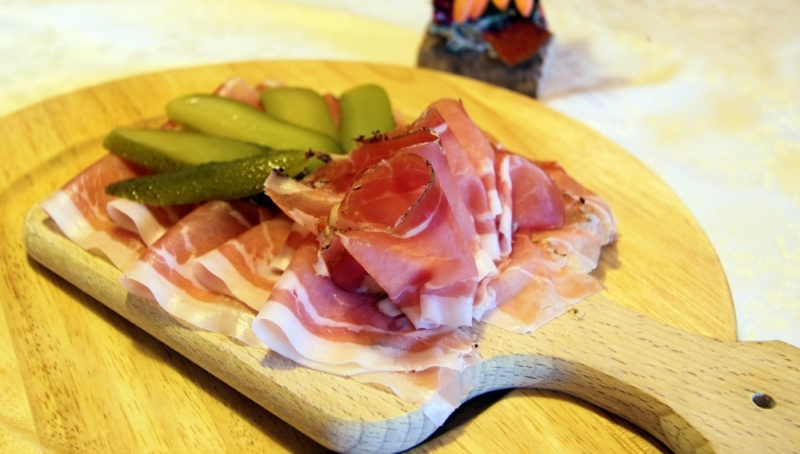history
Bolzano is a municipality in South Tyrol that rises in a basin surrounded by high mountains and at the intersection of communication routes that unite it with other Italian regions and the Alps. Bolzano has historically been a center of commercial traffic and the phenomenon of industrialization, which began after the annexation to Italy and the establishment of the province, led to a significant development in the secondary sector, thanks also to the abundance of hydropower in the area. It was precisely the phenomenon of industrialization, until 1980, that led to a considerable increase in the immigration of Italians from other regions and therefore to the increase in the Italian-speaking component in the city. Located on the Brenner communications network, Bolzano has a developed system of hotel and tourist facilities. The town was already inhabited in prehistoric times and was conquered in 14 BC by Drusus, who installed a military station in the place. During the second half of the 7th century, the city was the seat of a Lombard county, while in the 8th century, it was conquered by the Franks. Subsequently it was disputed between the Dukes of Trento and those of Bavaria and in 1027 it became part of the county of the bishops of Trento, thanks to Corrado II, with the exception of the suburbs of Gries, Dodiciville and Laives, which depended on the counts of Tyrol. In 1531 Bolzano was incorporated into the county of Tyrol and the Habsburgs recognized special statutes. Napoleon assigned it first to Bavaria and then to the Italian Kingdom, while in 1815 it was incorporated into Austria by the Congress of Vienna, and was part of Austria until the Italian occupation in 1918. It was seriously damaged during the Second World War and was annexed in the German state from 1943 to 1945. Bolzano, to date, has a medieval layout: it is divided into five districts and thanks to its variety, it can be defined as a "city of the world", where Tyrolean tradition coexists with Italian culture and Germanic. Also called a city of a thousand dialects, visiting it will mean immersing yourself in different cultures. In German it is called Bozen, while in Ladin it takes the name of Bulsan. During the fascist dictatorship, many families moved to Bolzano, to "colonize the city", which in those years was inhabited by the Germans, creating a remarkable ethnic mix. To date, Italians and Germans coexist in the place peacefully.
What see
Guido Piovene, in his trip to Italy, described the city of Bolzano as follows: "Bolzano is opulent, modern, but its beauty is Gothic". The writer was surprised by its streets lined with arcades and its play of light. In this city the atmosphere is relaxed and silence and tranquility reign.
Duomo - Dominican Church - Old Parish Church of Gries
We advise you to start the tour starting from the Duomo which, with its green and gold cover, stands out in the center of Piazza Walther and represents the most important religious building in the city. Rebuilt in 2008, it is an example of late Gothic finished in 1420, but with much more ancient origins. The Duomo was dedicated to Santa Maria Assunta and hides precious treasures inside. Once inside, you will be captivated by the red and yellow marble cladding with Gothic elements and the wine door, where the vintners once could sell the wine. There is also a 15th century fresco, made by students of Giotto's school and a beautiful Gothic pulpit, made of polychrome marble. The most precious objects are kept in the Duomo Museum. Near the Duomo, there is also the Dominican Church, to be visited especially for its cycle of frescoes, testifying to the frescoes that show the evolution of Bolzano's painting in the '300,' 400 and '500. It is a painting that is affected both by the painting of Giotto's school, and by German and Italian painting. Not to be missed is the Old Parish Church of Gries , a church which is about 2 kilometers from Piazza Walter and Piazza delle Erbe, where there is a wooden crucifix of the thirteenth century and a polychrome altar, created by Michael Pacher.
Piazza delle Erbe - Firmiano Castle
Piazza delle Erbe is a characteristic square where the fruit and vegetable market has been held since 1295 and where, even today, the people of Bolzano come to do the shopping. Walking through the market, you can breathe the multiethnic atmosphere of the city and enjoy some typical delights, or even admire the fountain of Neptune, among the 100 most beautiful fountains in Italy. On the neo-Gothic palace located on the corner with Via Museo, you will find a plaque reminiscent of the Al Sole hotel, where Goethe, Mozart and Emperor Joseph II once stayed. From Piazza delle Erbe, the arcades extend, forming a pedestrian street that has always been the center of the city's trade and walking through its arcades, it means you will get to know the soul of this city. Between a coffee and a tour of the shops, you can admire stuccos, frescoes or the Gothic and Baroque decorations of the old town hall of Bolzano.
Firmiano Castle - Roncolo Castle - Bolzano Christmas Markets
Not to be missed is the wonderful Castel Firmiano , which stands on a large rock, at the mouth between two rivers. This castle, in addition to its historical importance, is a symbol of independence. In fact, it was in this castle that in 1957 the cry of "Los von Trient" protested more than 30,000 South Tyroleans, to obtain autonomy from Trento. Since 2007, in the White Tower, there is a museum founded by the mountaineer Reinhold Messner, where objects from all over the world are collected which reveal the relationship between man and the mountain. Another destination not to be missed is Castel Roncolo , located on a spur of rock overlooking the Talvera stream, rich in medieval frescoes inside. The building was purchased in the 14th century by the brothers Niklaus and Franz Vintler, and in its cycle of frescoes various themes are represented ranging from literature to court life, with daily scenes of local nobles at the turn of the thirteenth and fourteenth centuries. During the Christmas period, do not miss the Bolzano Christmas Markets , called Bozner Christkindlmarkt, where walking through its wooden houses, you will be captivated by the smell of spices and mulled wine and breathe the real Christmas atmosphere.
Archaeological Museum - Otzi - hill town - Santa Maddalena Church
The Archaeological Museum is located in the historic center of Bolzano and is known for the figure of Ötzi, the ice man. Ötzi is the mummy of a man who lived in these areas over 4,000 years ago. He is also called the Similaun man, taking the name of the place where he was discovered. It is a mummy previous to Stonehenge and the Cheops pyramids, but it appears completely intact and well preserved. Also from the historic center, you can reach the Colle cable car , the oldest in the world. It was inaugurated in 1908 by a hotelier who wanted to allow tourists to reach his hotel, 1134 meters high. From that moment, through the cable car it is possible to reach the locality of the hill , where between bars and restaurants, you can enjoy the panorama of the glaciers and the Dolomites. The Rencio district is a hilly area that can be reached on foot from the city: it is a place rich in vineyards, monuments and landscapes. In this place there are also the farms, rural buildings of South Tyrol and the Loacker estate, which can be visited by appointment. There is also a small jewel to visit: it is the Romanesque Church of Santa Maddalena , a church built in 1295, enriched with frescoes made between 1200 and 1400. For lovers of contemporary art, there is the Museion , a venue at the forefront designed by a famous architecture firm in Berlin, where international contemporary art works are kept. For lovers of botany and geology, there is also the Museum of Natural Sciences in Bolzano, which will allow you to understand the birth and development of the Dolomites.
Carezza lake and Braies lake
Lake Carezza is located about 25 km from Bolzano and is one of the most suggestive natural lakes in Trentino Alto Adige. It is immersed in a forest rich in red and white firs and precious trees, still used today to obtain violins. The view of the mountains and a body of water with colors ranging from green to turquoise, will make you live a serene and relaxing atmosphere. This lake takes its name from the "Caricaceae", plants with large leaves that are found on its shores, but it is also known as the Rainbow Lake, both for the reflections of its waters and for the siren Ondina. According to a legend, the lake was inhabited by a beautiful siren and a sorcerer in love created a rainbow over the lake to draw it to himself. To defend himself from the sorcerer, the siren plunged into the water so as not to get out of it anymore and the angry sorcerer decided to break the rainbow into a thousand pieces and throw it into the lake. Today, in the center of the lake, there is the statue of Ondina. Lake Braies is a splendid natural lake, the largest in the Dolomites, located 97 km from Bolzano and attracts thousands of tourists in every season. In fact, in summer its emerald color can only bring locals and curious people from other regions. The autumn season, with the magic of its colors, makes it truly romantic. In winter, however, it can be admired covered by a blanket of snow and ice. It boasts a privileged position and for this reason it is constantly exploited as a starting point for breathtaking excursions. Space also for Nordic Walking enthusiasts, who can find various routes nearby.
Entertainment and Food and Wine
In Bolzano, the nightlife is quite quiet and is mainly concentrated in the city center, between Piazza Walter and the University. There are numerous bars, breweries, wine bars and typical restaurants (stube), obtained from ancient wooden houses. The real nightlife on the weekend can be found in the Christmas period, when the city is full of tourists who come to Bolzano to visit the famous Christmas markets. If you want to try a real Tyrolean winebar, we recommend the Fishbanke, while if you are looking for a more eventful evening, we recommend the Okay Lounge Bar, which ranges between electronic and house music. In any case, you can juggle excursions, food and wine tours and enjoy what is beautiful in this city, including nature, landscapes, good food and a long food and wine tradition. Here the speack is at home, but from the typically Tyrolean tradition you can taste dumplings and Schlutzkrapfen (spinach ravioli), venison goulash and pork loin with sauerkraut, without neglecting lake and river fish. Unmissable desserts, from Strudel to Kaiserschmarren and chocolate, cream or ricotta cakes, to finish with Zelten from Bolzano (a fruit and candy candied fruit, walnuts). The slopes and the flat valley around Bolzano, like a natural garden, are adorned with very long and tidy rows of vineyards. The production of wine in Bolzano has an ancient tradition which today translates into almost thirty private cellars plus one social one, operating in the area. Lagrein and Santa Maddalena are the two red wines, they are the 2 autochthonous vines which, as excellences, can perfectly tell the heritage of this territory. In June the "Night of the Cellars" initiative.
Climate, curiosity and advice
Climate: in Bolzano the climate is semi-continental, with cold winters and hot summers. The average temperature in January is 1 ° C, while that in July is 22.5 ° C and the temperature range is generally quite high. The rainiest season is summer, while the driest season is winter. The best times to visit the city are from mid-April to mid-June.
Curiosity: Bolzano, the multi-ethnic city par excellence, is divided between Italian speakers, German speakers and Ladins, even if the coexistence between the first two has not always been so peaceful. Instead the Ladin of the Dolomites, born from the vulgar Latin combined with the Celtic substratum, is today protected by the institutions.
Tips: before leaving for Bolzano, be careful of the clothes to pack. We advise you to equip yourself for excursions and to bring clothes suitable to cope with the temperature range in summer and the harsh climate in winter.


